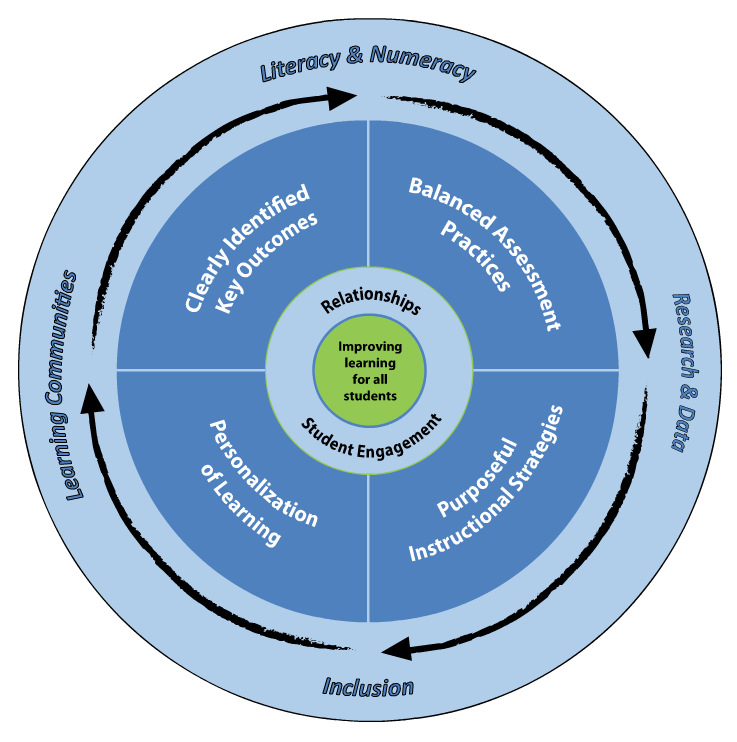The Quality Learning Environment
Background
- If we believe that continuous school improvement and student success in their learning depends on the quality of instruction in classrooms. We need to converse about effective instructional practices.
- The catch is, how can we have in-depth conversations about effective instruction if we don’t share a common language?
- To develop a common language, we needed to identify an instructional framework that defines and provides a common language and identifies core ideas of what is important around effective classroom practice (Westerberg, 2009).


Beliefs & Assumptions about Teaching and Learning
This framework was developed on a set of beliefs and assumptions which have been drawn from research on teaching and learning:

Effective Teachers
Highly effective teachers are the key to student learning and success (Marzano, 2007).

Student Success
Student learning and success can only occur when we, as a system, continually focus on improving teaching and learning practices in classrooms (Mourshed, Chijioke, & Barber, 2010).

Quality of Teaching
“…the most significant in-school factor affecting student achievement is the quality of teaching” (Hargreaves & Fullan, 2012).
Guidelines for Development

Educational Research
The QLE is based on sound educational research related to teaching and learning.

Commitment
The process will build commitment rather than compliance through a process of authentic, transparent engagement of educators throughout the district.

Updating
Updates will be provided to staff through school based administrators and key teacher groups (Teachers Matter and LST).


A Note About the Framework
The framework and description of the elements of a quality learning environment are intended to outline high leverage points around instruction. The focus of this framework is on instruction (teaching and learning) and what works best to help students learn. This framework does not include everything that happens in schools. We acknowledge the critical importance of the need for such elements as strong classroom management, the need to create global citizens, character development and connecting to community. We believe that many of these elements, although not specifically identified, are embedded in the big ideas within this framework.

